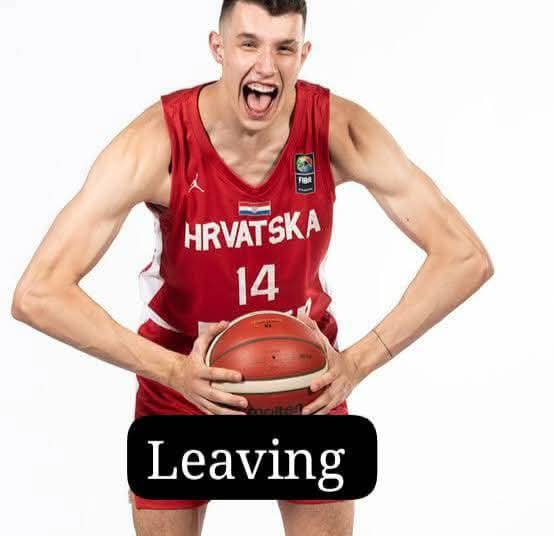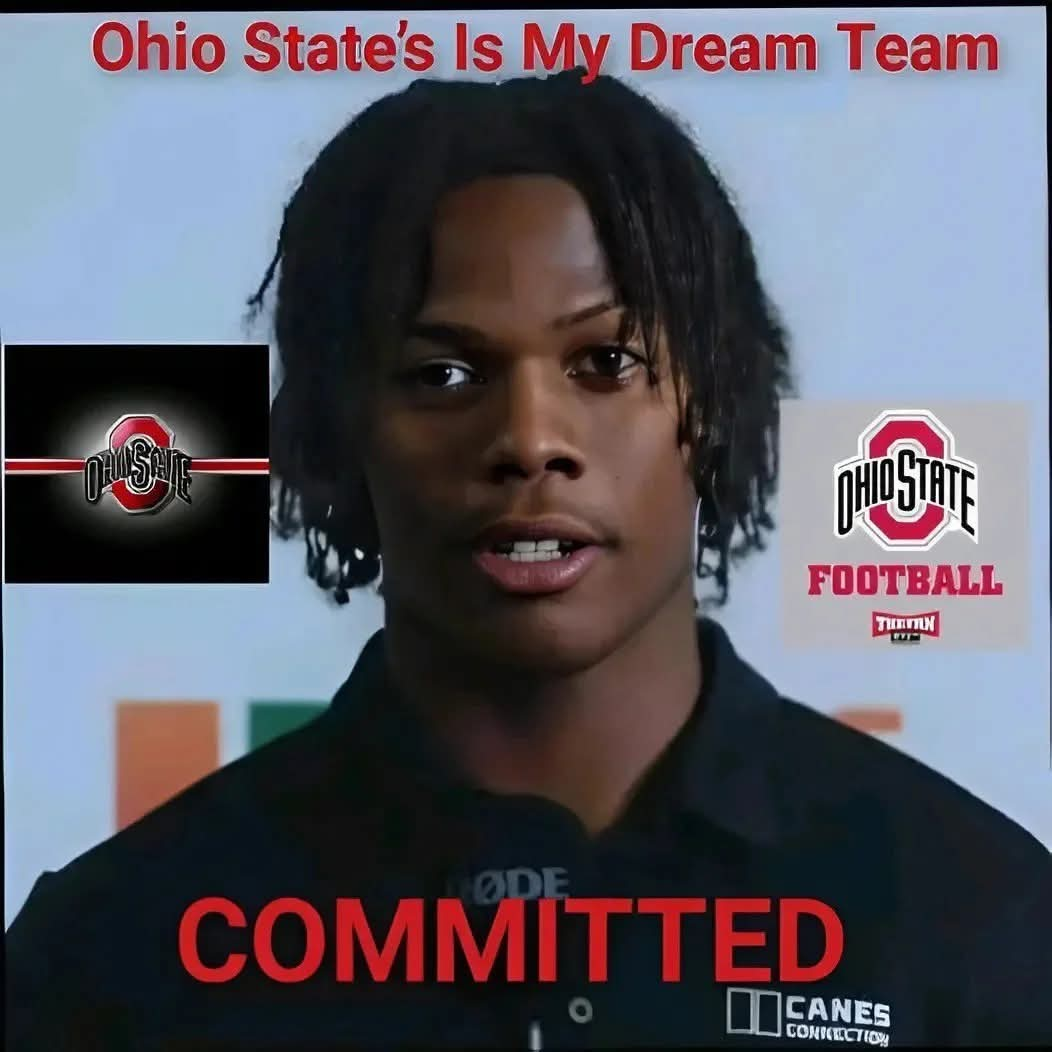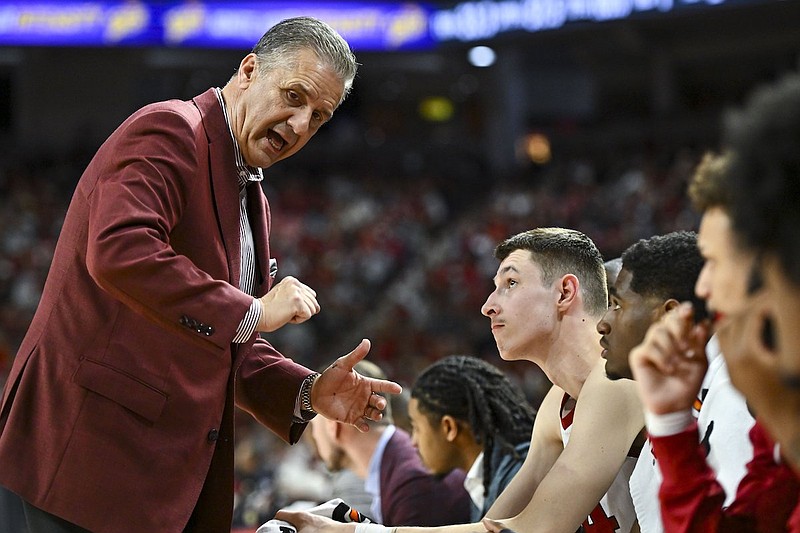Arkansas Razorbacks forward Zvonimir Ivisic, the 7‑foot‑2 big man who followed coach John Calipari from Kentucky last offseason, has announced his decision to part ways with the Razorbacks amid disagreements over NIL negotiations. In a move that has sent shockwaves through the college basketball community, Ivisic is set to enter the NCAA transfer portal as he seeks an opportunity that better aligns with his expectations both on the court and in the rapidly evolving name, image, and likeness landscape.
In his lone season with Arkansas, Ivisic appeared in 35 games and started 19 contests, averaging 8.5 points, 4.3 rebounds, and 1.9 blocks per game in 19.1 minutes of action. His shooting percentages—47.3 percent from the field and 37.6 percent from three—reflected a player with a skill set that could potentially translate well at the next level. Despite these promising numbers, his role with the Razorbacks was marred by inconsistency. During a stretch in conference play, Ivisic’s minutes were drastically reduced, with reports indicating that he played fewer than 10 minutes in four consecutive games. This lack of consistent playing time, compounded by disagreements over his NIL compensation, appears to have contributed significantly to his decision to leave the program.
According to sources, the NIL negotiations were at the heart of the dispute. In today’s college sports environment, where athletes now have unprecedented power to monetize their likeness, programs must balance competitive roster building with ensuring that players receive what they believe is fair market value. Ivisic’s departure suggests that he felt undervalued in the NIL discussions held by Arkansas administration and boosters. In a statement shared on social media, the forward reportedly expressed frustration over the failure to reach an agreement that recognized his potential both on the court and in the marketplace. “I’ve always believed in my ability to impact the game and represent my personal brand at the highest level,” he wrote. “When expectations aren’t met, it forces you to look for a situation where you’re fully valued.” While the exact details remain under wraps, insiders familiar with the matter have confirmed that the negotiations were a major factor in his decision.
Coach John Calipari, who has long been known for his ability to attract top talent, previously defended his management of Ivisic’s playing time. After a loss to Texas A&M earlier in the season, Calipari was quoted saying, “If you were watching the game, why didn’t I play him more? He got scored on, got scored on, got scored on. He didn’t block. He doesn’t block. Then I’ve got to go with the other guy.” Although Calipari’s remarks focused on Ivisic’s defensive performance during that particular game, they also underscored a broader issue: Ivisic’s role was never clearly defined. Early in the season, he was given significant playing time that showcased his ability to protect the rim and contribute offensively. However, as the season progressed—and especially in the high-stakes atmosphere of conference play—his minutes diminished. For a player of his stature and potential, this fluctuation was not only frustrating on the court but also had financial implications under the new NIL paradigm.
Ivisic’s situation is emblematic of the broader challenges facing college basketball programs in the NIL era. Programs across the country are scrambling to allocate millions of dollars to secure top talent, and while some institutions have successfully integrated lucrative NIL packages into their recruiting strategies, others have encountered growing pains. For Ivisic, the promise of substantial NIL compensation was a key part of his decision to leave. Despite his undeniable talent, he felt that the compensation structure at Arkansas did not adequately reflect his market value. This sentiment is increasingly common among athletes who now have the freedom to negotiate individual deals that can sometimes eclipse the financial benefits of remaining at a prestigious program.
Adding another layer of complexity is Ivisic’s background. The Croatian forward arrived at Arkansas after a somewhat rocky debut at Kentucky—where eligibility issues delayed his season start—and was initially seen as a project with enormous upside. At Kentucky, he had shown flashes of brilliance, including a standout game against Georgia where he scored 13 points, grabbed five rebounds, and blocked three shots. However, his transition to Arkansas did not fully capitalize on that early promise. Instead, inconsistent playing time and a perceived undervaluing of his contributions on the court led to mounting frustration.
The fallout from Ivisic’s departure could have significant implications for the Razorbacks. As the first high-profile player to leave amid NIL disputes since Calipari’s arrival, his exit may prompt other players to reevaluate their own situations within the program. Already, freshman guard Casmir Chavis has announced transfer intentions, indicating that the discontent might be more widespread than initially thought. With Ivisic’s departure, Arkansas now faces the task of filling a key frontcourt spot that was expected to be a cornerstone of their roster moving forward. This development raises questions about the Razorbacks’ overall strategy in managing NIL deals and player roles—a challenge that many programs are still learning to navigate in this new era of college athletics.
Moreover, the move highlights the delicate balance that coaches must strike between on-court performance and off-court financial negotiations. For John Calipari, whose reputation as a recruiter and program builder is unparalleled, Ivisic’s exit represents both a personal and professional setback. Calipari has built his career on identifying talent and maximizing that talent’s potential; however, the NIL revolution has added a new dimension to recruiting that even he has had to adapt to. While his ability to attract top-tier talent remains undiminished, the fallout from disputes like Ivisic’s suggests that even elite programs must continuously reassess their approach to player compensation and development.
As the transfer portal continues to churn, many eyes will be on Ivisic to see where he lands next. Analysts speculate that his size, shot-blocking ability, and potential three-point shooting could make him an attractive option for programs in power conferences such as the Big Ten or ACC, where lucrative NIL deals are more commonplace. His departure from Arkansas could also serve as a cautionary tale for other programs struggling to keep pace with the evolving financial landscape of college sports.
In the coming weeks, as Ivisic’s name circulates through the transfer portal, his decision will undoubtedly spark a broader conversation about the intersection of athletic performance, player compensation, and program strategy in the NIL era. For Ivisic, the choice to leave Arkansas is not simply about a single season of fluctuating minutes or one disagreement over compensation—it is a statement about his worth and his vision for his future. He is seeking an environment where his contributions are not only recognized on the court but also rewarded off it.
At its core, Zvonimir Ivisic’s departure underscores the transformative impact of NIL on college basketball. No longer are athletes solely defined by their statistics and minutes played; now, their market value and ability to monetize their talent play an equally critical role in their collegiate careers. For programs like Arkansas, adapting to these changes is essential if they wish to retain and develop the kind of talent that can compete at the highest levels.
As Ivisic embarks on the next chapter of his basketball journey, his decision serves as a wake-up call to programs nationwide. In a landscape where every dollar and every minute counts, ensuring that athletes feel valued—both in terms of playing time and financial compensation—may be the key to building sustainable, championship-caliber teams in the new era of college sports.



